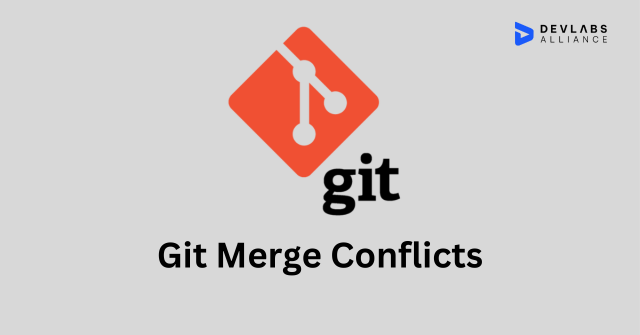
How To Resolve Git Merge Conflicts?
John Doe
2024-04-15
0 mins read
GIT
Git is one of the many famous source-control systems for software development professionals across many industries, allowing numerous team members to collaborate on projects concurrently. However, when multiple users work on the same file simultaneously, a merge dispute may occur.
Merging and disputes are regular occurrences in the Git environment. Conflicts in other version control methods, such as SVN, can be costly and time-consuming to resolve. Git makes merging a breeze. Git will usually find out how to automatically merge new changes.
👉Difference between Git and SVN
When working in a team, you may encounter a circumstance in which someone sends modifications to a file you are working on.
If the modifications do not overlap (that is, they are to different lines of code), the conflicting files are automatically merged.
However, if the exact lines were affected, Git cannot arbitrarily choose one side over the other and requests that you resolve the issue. In addition, conflicts affect only the developer performing the merging; the rest of the team is unaware of the conflict.
Git will identify the file as conflicting and stop the merging operation. It is then up to the developers to resolve the conflict.
Understanding Git Merge Conflicts
Most merge conflicts are resolved automatically with version control systems like Git. However, there are times when git merge is unable to address a problem.
Here are some examples of merge conflicts:
- In a file, change the same lines of code.
- Removal of files while changes are being made elsewhere.
Because the problem occurs locally and the rest of the project members are ignorant, resolving the conflict is a high priority that must be addressed immediately.
Different Types of Git Merge Conflicts
A merge can enter a conflicting state at two points:
1. Begin the Merge Process
Merging will not start if there are modifications in the working directory's stage area for the current project. Conflicts occur in this situation due to outstanding modifications that must be stabilized using various Git commands.
2. During the Merge Process
The merge failure indicates a conflict between the local and merged branches. In this instance, Git resolves as much as feasible, but some issues in the conflicted files must be fixed manually.
Step-by-Step Process to Resolve Merge Conflicts
A few initiatives might be taken to reduce the number of steps required to resolve merge conflicts in Git. First, the most straightforward way to resolve a conflicting file is to open it and make any necessary modifications. Then, after editing the file, we may stage the newly merged material with the git add command.
The last step is using the git commit command to create a new commit.
Git Commands for Conflict Resolution
1. execute git log - merge
The git log - merge command can help you find the commits creating the dispute.
2. git diff
The git diff command identifies discrepancies between states of repositories or files.
3. git checkout
The git checkout command is utilized to undo file changes or switch branches.
4. git reset - mixed
To undo modifications to the working directory and staging area, use the git reset - mixed command.
5. git merge - abort
The git merge - abort command allows you to exit the merge process and return to the state before the merging starts.
6. git reset
When there is a merge conflict, the git reset command is used to restore the conflicted files to their original state.
Conclusion
Merge conflicts can be a scary experience. Fortunately, Git provides sophisticated tools for navigating and resolving conflicts. With its automatic merging features, Git can handle the majority of merges on its own. A conflict occurs when two independent branches update the same line in a file or when a file is removed in one branch but changed in the other. There are many processes available to assist in the resolution of merge conflicts. In addition to Git, multiple third-party applications provide streamlined merging functionality.
INQUIRY
Want To Know More
By tapping continuing, you agree to our Privacy Policy and Terms & Conditions
“ The hands-on projects helped our team put theory into practice. Thanks to this training, we've achieved seamless collaboration, faster releases, and a more resilient infrastructure. ”

SkillAhead Solutions

Devlabs is responsible for the most advanced on Webflow and Framer. We help businesses grow with our comprehensive IT training solutions.
USA
1603, Capitol Avenue, Suite 413A, 2659, Cheyenne, WY 82001, USA

`Copyright © DevLabs Alliance. All rights Reserved`
|
Refund & Reschedule Policy
Privacy Policy
Terms of Use


